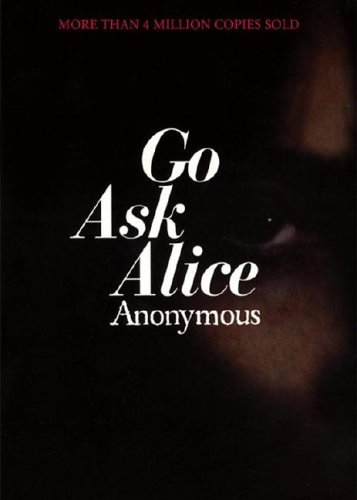When I was little there was one particular TV Movie of the Week that stuck with me—back when the TV Movie of the Week wasn’t a cliché but tackled issues that became the topic of dinner table conversations across the country. It was called “Maybe I’ll Come Home in the Spring” and was the story of a hippie girl who comes home degraded, exhausted, and completely messed up after a year on the streets. It starred Sally Field, whose casting was perfect because watching Gidget/The Flying Nun drop to the bottom of life’s barrel was doubly devastating. I was riveted.
At about the same time a book was published called Go Ask Alice. It was the anonymous diary of a girl’s losing battle with drug addiction. I checked it out of my school library the day after the local police came to my grade school to talk about the evils of drugs using a piece of poster board upon which they had taped a hypodermic and spoon, a joint, some colored pills, and a sugar cube. This was 1972 and we weren’t very sophisticated. I read the book in three days and because I’d checked it out for a week, I read it two more times.
The heroine does not have a name but like Sally Field’s character she is ordinary. She worries about boys, her weight, and her popularity at school. She loves her parents and doesn’t want to let them down and berates herself every time she does. In an effort to make new friends, she goes to a party where someone slips LSD into her soda and she comes home a completely different girl. She is happy and in love with the world until she gets depressed and can’t sleep and starts to take doctor-prescribed tranquilizers, then speed, then pot, then loses her virginity while high, then meets a girl with whom she starts to sell drugs, then they run away to San Francisco where they are given heroin and raped by one of their bosses and try as she might to change, her life goes downhill from there—a very model of hell. Gritty and dirty and raw, it was a crazy and over-the-top story but I didn’t know that. I was completely fascinated and terrified. I made sure to share it with everyone I knew.
We passed the book around and talked about it incessantly on the bus to and from our Catholic grade school. Asking each other, could we do that? Would we be so stupid to leave our families and sleep with strangers? The answers were always an easy “no,” God bless our little Catholic hearts. But seeing how easy it was for the heroine to go from a normal girl to an addict really scared us. Scared straight? I don’t know, we hadn’t been to high school or college yet but it certainly stayed with me.
Years later it was revealed the book was a work of fiction and it fell out of favor. Pushed aside by the number of other addiction memoirs written by much better authors, all of whom promised their story was true. When Phillip Seymour Hoffman died and heroin was back in the spotlight I got a copy of the book because I actually remembered it as a heroin addiction memoir like The Basketball Diaries. I was surprised, when I read it again, that it was LSD and pills that did her in. I don’t remember them being such a scourge. The story is a little dated—she irons her hair as a sign of rebellion—but the same feelings I had when I was twelve came back even though now I was reading it as a parent. Any story of addiction, whether fact or fiction, is uniquely harrowing and this book, even forty years later, is still a riveting and terrifying story and deserves to be read.





